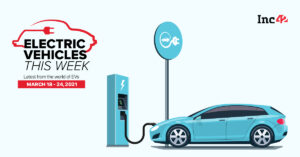A business fleet is a group of vehicles that are owned or leased by your business. This could include cars, vans, trucks, motorcycles, and so on. Multiple businesses will need a fleet for various reasons – the most obvious of which is to carry out delivery services for customers. Some companies will have fleets as a way of maintaining a brand image, while others have them to conduct other services.
Regardless of why you have a business fleet, you need to get to grips with the costs associated with them. Owning or leasing a large group of vehicles can be extremely costly if you’re not careful. Today’s post will go through some of the key expenses while offering some advice on how to manage them and keep costs to a minimum.
The Initial Fleet Costs
Firstly, you have the cost of the fleet itself. If you own the fleet, the costs will include the price of all the vehicles when you buy them. This can be paid in a lump sum, or you can use finance to pay it off monthly. For leasing, you pay a monthly fee to use the fleet for as long as your contract allows. At the end of the contract, you can extend the lease or find a new fleet to lease.
In most instances, leasing is a more affordable way of running a fleet. The idea of not having monthly payments may seem nice, but have you ever considered how much it costs to buy a whole fleet of vehicles? The only time it makes sense is if your fleet is very small or you have more than enough money to cover the costs and still operate at a profit. Otherwise, leasing is easier to afford – and you have the benefit of finding different leasing contracts to save money once yours runs out.
Fleet Maintenance Costs
Did you know that the cost of maintaining a vehicle can amount to almost 15% of the vehicle’s Whole Life Cost? This is because there are so many things you need to do to maintain a vehicle:
- Regular servicing
- Any ongoing repairs or maintenance to keep the vehicle running
- Paying for replacement parts or upgrades
- Changing tires
- Installing new brake fluids
- Changing the oil
The list goes on and on, and it costs money for you to maintain a vehicle. Not only that, but you have to multiply these costs by however many vehicles are in your fleet. Wait a minute, it gets worse. If you own larger vehicles – like vans or trucks – the maintenance costs can increase as they are harder for you to look after.
To make matters even worse, you need to do all of these things to keep your fleet in good working order. Cars need to be serviced, small repairs must be completed – you can’t avoid them. What you can do is think of ways to reduce the costs of ongoing maintenance. For instance, your choice of the manufacturer will make a huge difference. Opting for a reliable and well-known brand, like Lincoln, can set you up for more affordable running costs. There are lots of Lincoln service repair manuals online, meaning it’s easy to find parts to repair any elements of the car. The cars themselves are less prone to breaking if they are made by a reliable manufacturer. Take this into account when purchasing or leasing your fleet.
The next thing you can do is take better care of your fleet vehicles. Ensure they are regularly cleaned and washed – and that the drivers aren’t overexerting them. Book them in for annual servicing, ensuring they can be looked at, and any slight issues can be corrected before they become long-term repairs. Changing tires and keeping a good tire pressure will also help to maintain the vehicles and reduce the overall cost of keeping them.

Fuel Costs
Obviously, fuel costs will amount to a huge chunk of the costs of running a business fleet. The more these vehicles are driven, the more fuel they will use. Your drivers aren’t expected to pay for fuel themselves, so it goes on the business accounts instead. Again, the size of your fleet can make this a massive charge that’s on going week after week. Depending on the vehicle, and how much it is driven, your drivers might be topping up their fuel tanks once a week.
Luckily, there are ways you can reduce the overall cost of fuel for your fleet. To start, consider opting for an all-electric fleet. They are available, but you need to factor in the cost of developing the right infrastructure to make them work. By this, we mean the cost of installing charging points on your premises to charge the vehicles when they’re not in use. You also need to consider if it is possible for your fleet to be all-electric, depending on how far they drive and the routes they take each day. Instead, it might be more favorable to opt for hybrid vehicles that still clamp down on fuel usage and offer good efficiency without the drawbacks of an electric vehicle.
The final alternative is to look for vehicles with good fuel efficiency. It can be hard to find trucks that are electric or hybrid right now, so choosing ones with the most efficient engines will help you save money on fuel. They won’t need to be topped up as often, reducing the monthly fuel bill for your fleet.
Insurance Costs
All vehicles need to be insured to ensure they’re safe for road use. Naturally, when you have a business fleet, every single one of your vehicles has to be insured. The good news is that you can get this with relative ease by looking online. Most auto insurance agencies will have a commercial fleet option for you to look at.
The same money-saving tips apply here as they do when you buy auto insurance for a personal vehicle. Check the premiums, see what coverage you get, and compare the market. Search for the most trustworthy insurance provider for the best price. This isn’t always the cheapest option, but it will be the one that provides the best value for money. Similarly, you should always compare insurance quotes every single year when your contract is about to run out. You can save a fortune by switching to different providers year after year, instead of staying with the same one out of loyalty.
Fleet Management Costs
There’s one final thing to take into consideration, and it’s the cost of any fleet management software you choose to purchase. This software usually gets billed either monthly or annually, and it can cost a couple of hundred dollars per year for the good stuff. In the grand scheme of things, this isn’t that much at all. Especially when you consider what fleet management systems do; they let you track your fleet to manage its efficiency and ensure your vehicles never get stolen or used for things outside of business hours.
To save money on fleet management costs, check out the different providers and think about the services and features you require. Sometimes, you can save money by opting for the basic version of a fleet management system, rather than the advanced ones.
With all things considered, there are many different costs to be aware of when managing a business fleet. The vehicles themselves cost money to lease or own, and you have the recurring maintenance and fuel costs to worry about. These are the biggest concerns, but you should still look to save money on smaller costs – like insurance and fleet management software. The more money you save on running your fleet, the more money your business can make.










